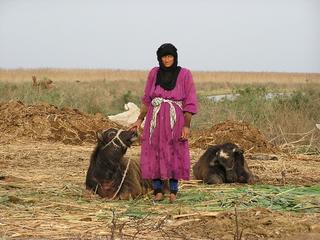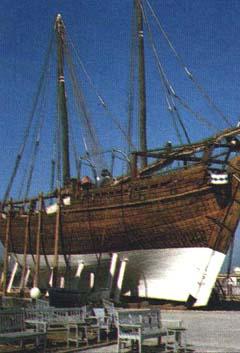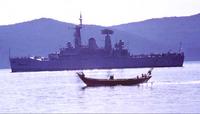 Persian Gulf Environment II
Persian Gulf Environment II.
.
.
.
.
Hope for Young Residents of Iraqi Marshlands;
.................................. "Venice" of Iraq
The Ramsar Convention is a "lucky" organization. Just because it was founded in Iran, we pay more attention to it. I use this occasion to introduce the active enviromental organizations in Persian Gulf Region. --Siamak D. Ahi
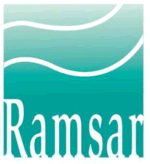 R a m s a r C o n v e n t i o n o n W e t l a n d s
R a m s a r C o n v e n t i o n o n W e t l a n d s
The Convention on Wetlands, signed in Ramsar, Iran, in 1971, is an intergovernmental treaty which provides the framework for national action and international cooperation for the conservation and wise use of wetlands and their resources. (left: Ramsar Convention logo) There are presently 144 Contracting Parties to the Convention, with 1428 wetland sites, totaling 124 million hectares, designated for inclusion in the Ramsar List of Wetlands of International Importance. http://ramsar.org/ (left: Young Residents of Iraqi Marshlands)
There are presently 144 Contracting Parties to the Convention, with 1428 wetland sites, totaling 124 million hectares, designated for inclusion in the Ramsar List of Wetlands of International Importance. http://ramsar.org/ (left: Young Residents of Iraqi Marshlands)
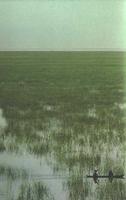
.
Mission
"The Convention's mission is the conservation and wise use of all wetlands through local, regional and national actions and international cooperation, as a contribution towards achieving sustainable development throughout the world" . (left: Iraqi Marshlands)
Wetlands of Iran:
With this link it is easy to locate wetlands (Daryache or Taalaab) in Iran: http://www.wetlands.org/RSDB/default “Click on Select Sites using Web Mapper” t is easy to locate wetlands in Iran. You can choose the country or just click on the world map to zoom in. Here is the list of wetlands in Iran:
Neiriz Lakes and
Kamjan Marshes,
Lake Oroomiyeh,
Shadegan Marshes and
tideal mud flats of Khor Musa and Khor-al Amaya,
Khran Straits,
Hamoun-e Saberi,
Gavkhouni Lake and
Marshes of Lower Zayandeh Rud,
Miankaleh Peninsula,
Gorgan Bay,
Lapoo-Zaghmarz Ab-bandans.

World Wetlands Day
February 2nd each year is World Wetlands Day. It marks the date of the adoption of the Convention on Wetlands on 2 February 1971, in the Iranian city of Ramsar on the shores of the Caspian Sea.
Each year since 1997, government agencies, non-governmental organizations, and groups of citizens at all levels of the community have taken advantage of the opportunity to undertake actions aimed at raising public awareness of wetland values and benefits in general and the Ramsar Convention in particular.
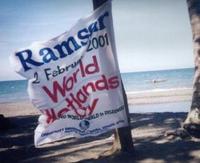 From 1997 to 2004, there are reports of more than 80 countries of WWD activities of all sizes and shapes, from lectures and seminars, nature walks, children’s art contests, sampan races, and community clean-up days, to radio and television interviews and letters to newspapers, to the launch of new wetland policies, new Ramsar Sites, and new programs at the national level.For the location of all wetlands in the world see: http://www.wetlands.org/RSDB/default “Click on Select Sites using Web Mapper”
From 1997 to 2004, there are reports of more than 80 countries of WWD activities of all sizes and shapes, from lectures and seminars, nature walks, children’s art contests, sampan races, and community clean-up days, to radio and television interviews and letters to newspapers, to the launch of new wetland policies, new Ramsar Sites, and new programs at the national level.For the location of all wetlands in the world see: http://www.wetlands.org/RSDB/default “Click on Select Sites using Web Mapper”

Ramsar Small Grants Fund (SGF) for Wetland Conservation and Wise Use
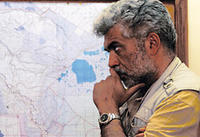 Current challenges to revitalize the "Venice of Iraq". International organzations went to Iraq .
Current challenges to revitalize the "Venice of Iraq". International organzations went to Iraq .
 helping new Iraqi government and NGOs to train people and discuss the issues.
helping new Iraqi government and NGOs to train people and discuss the issues.
The Ramsar Small Grants Fund, established in 1990, to assist developing countries and those with economies in transition in implementing the Convention and to enable the conservation and wise use of wetland resources.
Since then some 165 projects totaling about 6 million francs were funded or co-funded.
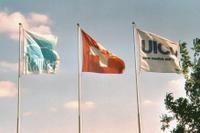
Home of the Ramsar Secretariat,
Gland, Switzerland
The Ramsar Secretariat staff housed by IUCN - The World Conservation Union in its headquarters building in Gland, Switzerland, includes at present 14 permanent positions and four internship positions. In addition, there are five staff members at the Coordination Unit of the Mediterranean Wetlands Initiative in Athens, Greece, all of them funded by the Government of Greece.
Cooperation between Ramsar and IUCN staff is extraordinarily close. The Convention on Wetlands is not part of the UN or UNEP system of environmental treaties, with many of the secretariats of which, however, Ramsar has established collaborative agreements.
Internships
at the Secretariat of the Convention on Wetlands
The Ramsar Internship Programme supports four regionally-oriented positions, one each for Africa, the Americas, Asia, and Europe; all are normally one-year positions and the Secretariat posts announcements in advance of each new vacancy. Candidates should be nationals of countries from the region being applied for. See: http://ramsar.org/about/about_internships.htm
Will Continue







